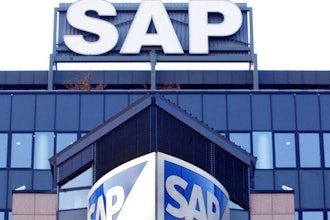Businesses of all shapes and sizes, from retail to manufacturing, are finding a “home” in the Cloud. As consumer demand for quicker, better and cheaper becomes the driving force behind almost every industry, companies who maintain their data, business processes, and production in separate, static silos are struggling to keep up. Even notoriously slow government agencies are jumping on the bandwagon, with digital documentation becoming a requirement for many import and export functions. How can companies maintain their footing in this environment? Keeping their head — and data — in the cloud.
Cloud computing is not new. For over two decades, companies have been moving their business systems from physical to digital in order to become more flexible and responsive to the challenges they face. Yet many of these systems exist only in closed, company servers, and don’t communicate beyond the reaches of the office. However, thanks to increasingly efficient technology and growing broadband access in every corner of the globe, cloud computing is about to reach its zenith, and many companies have yet to realize the potential of a fully automated, fully cloud-based system.
Complicated Business Challenges Require Integrated Solutions
Order fulfillment and production are dictated by consumer demand; it is also a fundamental area in the supply chain where flexibility is a key to margin reduction and speed to market. The growing, global nature of today’s supply chains means that shifts in sourcing, production, and sales avenues are incredibly complex, requiring companies to invest up-front on flexible technology solutions that can accommodate rapid change.
One of the biggest challenges companies face is a hesitation to invest in new technologies without proven ROI in the market. Combine that investment fear with the knowledge that legacy IT systems will need to be replaced, and the hesitation to embrace cloud-based solutions isn’t so surprising. When making the switch to ERP, many companies faced huge hurdles and technological delays that caused endless headaches. However, technology has improved immensely since those early implementation growing pains. Without the will to tackle new technology, companies will get left behind.
To continue growth, retailers and manufacturers must look at how to capitalize on the convergence of the digital and physical supply chains and create better collaboration and visibility across their systems.
Implementing a digital strategy is essential to collaboration and integration with key suppliers, such as raw material suppliers, production facilities, and internal teams. Cloud-based order management facilitates integration and collaboration to create a better environment for faster and more reliable production.
One key feature of cloud-based solutions is integration with existing ERP systems. With tight integration, companies can collaborate on every phase of the purchase order with suppliers and factories. In 2017, gaining visibility over the full production process and supply chain has moved from “nice to have” to “must have,” and only a fully-integrated, cloud-based solution can offer complete visibility.
A Case Study
As companies continue to outsource production globally, their reputations have come to depend not solely on their own practices but also on those of the companies in their extended supply chains. A successful digital transformation of the supply chain needs to adopt a holistic view of the entire ecosystem of partners, from raw material providers, manufacturing partners and suppliers, logistics and transportation providers to retail and distribution channels.
One example of this is a top-tier brand which supplies athletic footwear and apparel in both retail and wholesale environments with a global presence of stores and distribution markets. This brand needed a platform to enable visibility of all purchase orders together with change order collaboration of hundreds of vendors and factories. The company also needed a better shipment tracking solution for complete order end-to-end visibility.
Previously the company’s merchandisers handled thousands of orders every month with vendors located around the globe. These merchandisers were sending — via mail or fax — hard copies of POs to their vendors globally, without a way for their partners to react in a timely manner or any visibility into their supply chain. The company needed a more formalized process and centralized platform to track this process.
The company implemented a global trade management cloud-based solution to execute purchase orders, purchase order collaboration with changes, packing lists and invoices. The system was integrated with a third-party logistics provider who supplied shipping and logistics information to complete the production reporting. The system also integrated with a financial institution to automate the payment process with vendors.
The company also gained access to an airfreight approval process that resulted in a large cost reduction in air freight charges.
The most quantifiable result to date has been a marked increase in fill rates by 10-15 percent from previous years. The collaborative approach eliminated errors caused by relaying of information, greatly improving the consistency and accuracy of information shared by vendors and merchandisers. The brand is exploring the expansion of the system capabilities to include various modules for material management and quality testing.
In today’s globalized and outsourced world, an organization’s success is no longer dependent on its own efforts alone. The success of an organization depends largely on how effectively it can orchestrate a vast, global network of supply chain partners to deliver goods and services that meet the needs of individual consumers. With the right cloud-based solution, these companies can address the challenges they face to measure, manage and improve product development and supply chain capabilities.
Gary Barraco is Director of Global Product Marketing at Amber Road.























